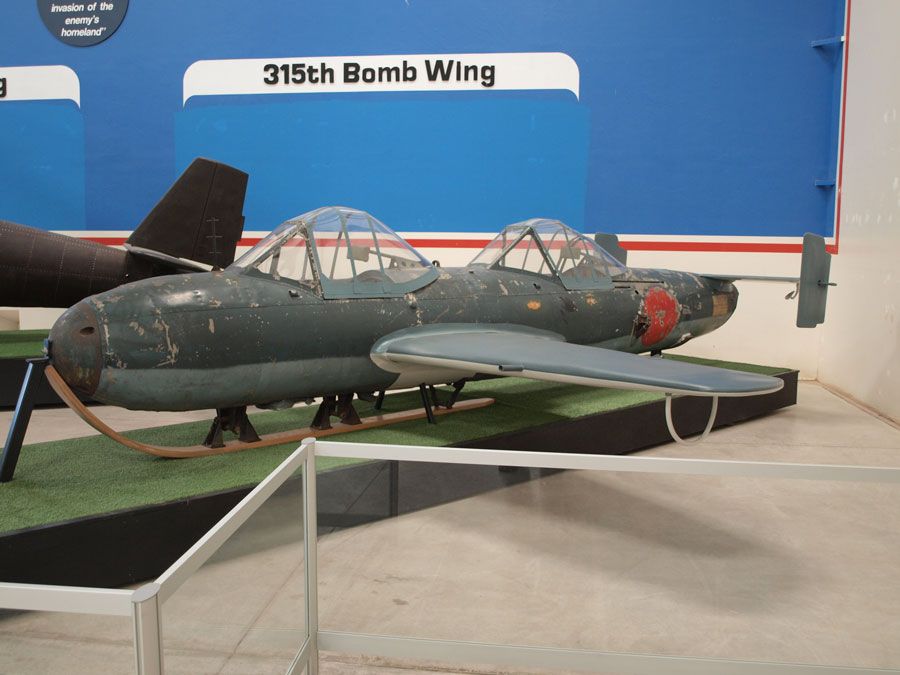YOKOSUKA MXY7 OHKA MODEL 43 K-1 KAI
The Ohka (Cherry Blossom) is a winged human-guided anti-ship bomb developed by the Japanese Navy in 1944 for attacks against Allied warships. The operational version of the weapon contained a 2,600 pound bomb and a single pilot. It was carried to within twenty miles of its target by a G4M “Betty” bomber. After release, the pilot would guide the bomb toward the target. At this point, three rockets in the tail of the bomb were fired to increase the speed of the bomb to well over 600 miles per hour. The Ohka was first used against American forces in April 1945 during the invasion of Okinawa. A total of seven ships were hit by Ohka bombs, three of which sank.
Although the only operational use of the Ohka involved dropping the bomb from a carrier aircraft, other versions were developed that were intended for use from land bases or even from submarines. Among them was the Model 43 K-1, a two seat training aircraft that replaced the warhead with a seat for a student pilot. It was launched from a catapult and powered by a single rocket giving a limited powered flight capability. The intent was to give the trainee pilots some experience in guiding their weapon before they were launched on an operational mission.
Wingspan | 29 ft. 6 in |
Length | 26 ft. 9 in. |
Height | 3 ft. 9 in. |
Weight | 5,004 lbs (loaded) |
Maximum Speed | 345 mph |
Service Ceiling | 13,123 ft |
Range | 20 miles |
Engines | One Type 4 Mark 1 Model 20 solid-propellant rocket with 573 pounds of thrust |
Crew | 2 |
Manufacturer
Yokosuka
Markings
Imperial Japanese Navy, 1945
Designation
MXY7 Ohka
Serial Number
62
